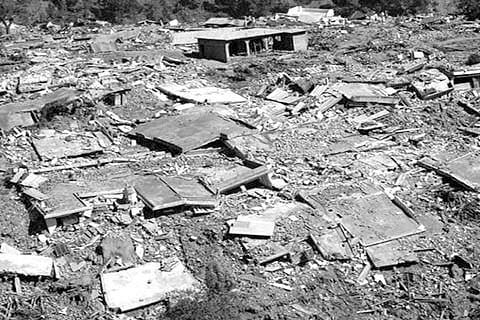listening seriously to the advice of experts and then implementing it in letter and spirit is very important for the people of Jammu and Kashmir, which is vulnerable to earthquakes.
Entire J&K falls in seismic Zone-IV and V and there is always an apprehension of threat to life and property due to possible earthquakes.
As per official records almost all the districts of Kashmir valley and Doda, Kishtwar and Ramban districts fall in seismic Zone-V and the rest of the districts in seismic Zone-IV.
J&K has already been hit by a major earthquake on October 8, 2005. After the death and destruction, it was being expected that some lessons would be learnt. But even after 17 years, it seems hardly any lesson has been learnt.
Most of the constructions are going on the same pattern as before October 8, 2005 earthquake. Khalid Bashir, Senior Research Fellow in the Department of Earthquake Engineering, at IIT Roorkee, during a conversation with Greater Kashmir said that earthquakes do not kill but unsafe buildings do.
“One is inevitably left wondering whether the structures built since 2005 have been constructed specifically to withstand a stronger shock,” he said. There are people who are concerned about what will happen if another major earthquake occurs.
There was some kind of panic in recent times when a study by Roger Bilham, a seismologist and professor of Geology at the University of Colorado at Boulder, US, mentioned that a major quake with magnitude 9 is likely to cause major destruction.
Panic is not a solution to any problem and in fact it leads to more other serious problems. Instead of getting panicky there is need to think about practical solutions based on the advice of experts. One cannot prevent natural disasters but measures in advance need to be taken to minimise the death and destruction.
After the 2005 earthquake lot of stress was laid on constructing the earthquake resistant buildings. The government also came into action and strictly ordered the constructions on such guidelines. While a small section of people out of concern for their safety or due to official directions tried to follow the guidelines.
But most others kept on ignoring such advices and suggestions of the experts. The situation by and large continues to be the same even now. There is a need of collective realisation that constructing the unsafe buildings will prove dangerous and disastrous during earthquakes.
The earthquake resistance parameters have to be met while constructing houses and other buildings. At government level also there is also no significant headway to make thousands of identified vital public buildings earthquake resistant under National Seismic Risk Mitigation Programme (NSRMP)







